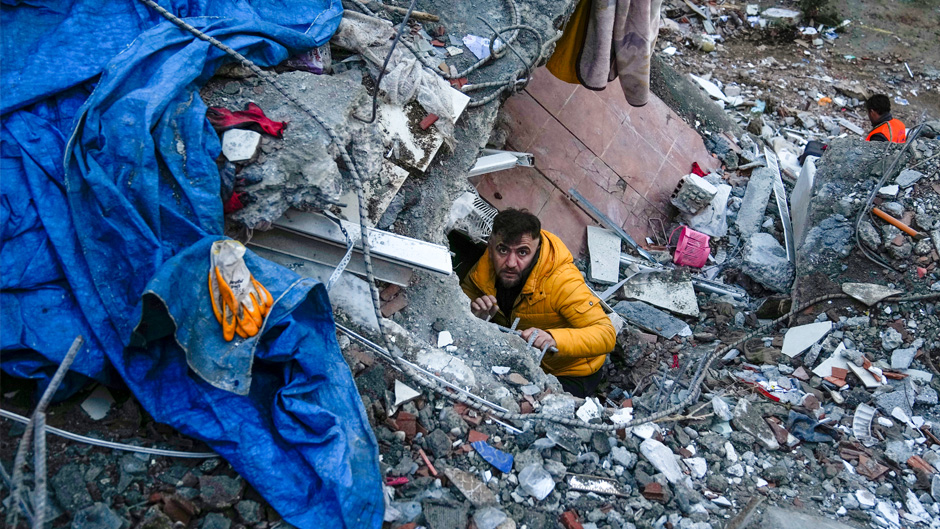For Nurcin Celik, it was like reliving a nightmare.
When the University of Miami researcher learned about the 7.8-magnitude earthquake that rocked southern Turkey early Monday, killing thousands there and in northern Syria, she immediately thought of her teenage years in Turkey and how she lived through the devastating 1999 temblor that struck near the city of Izmit, southeast of Istanbul. More than 17,000 perished in that disaster.
“I immediately had flashbacks,” said Celik, an associate professor of industrial and systems engineering. “I remembered seeing so much debris, so many buildings being leveled, people screaming, the panic, and the smell—the smell of loss and devastation
Derin Ural got the news of Monday’s tragedy via a phone call from a relative and, like Celik, also had recollections of the 1999 earthquake. Ural was teaching at the Middle East Technical University in the country’s capital of Ankara, at that time.
“It’s so difficult to describe what I saw, what I heard. It was just so heartbreaking,” recalled Ural, a professor of civil engineering and the associate dean for student affairs at the College of Engineering, whose parents were born in Turkey.
After the ’99 Izmit quake, Ural—whose area of specialization is in geotechnical engineering, earthquake engineering, and disaster management—participated in reconnaissance efforts in devastated regions of Turkey. “We noticed many things that did go wrong in terms of building materials and design codes. And in terms of emergency management, there was a lack of communication and coordination,” she said. “But Turkey has come a long way since then.”
And part of the reason it has is because of Ural’s efforts immediately after the 1999 disaster. While at Istanbul Technical University, she coordinated a binational effort between Turkey and the U.S. Federal Emergency Management Agency that, among many achievements, trained Turkish officials in disaster preparedness and response.
“There’s coordination now,” Ural said. “From the emergency management or coordination perspective, it seems like they’re ready. However, as far as structural issues and the materials used in construction, there’s still room for improvement. Looking at what happened, a lot of the reinforced concrete structures collapsed.”
Foreign governments have offered to help Turkey and Syria in the aftermath of the destructive earthquake. But in Syria, aid efforts have been complicated because of diplomatic tensions with the Bashar al-Assad government and the ongoing Syrian civil war.
The devastated Turkish city of Kahramanmaraş faces daunting challenges in the days and months ahead. The earthquake has seriously damaged that city’s energy infrastructure, from electrical transmission lines to natural gas transmission and distribution lines, said Celik, who leads the College of Engineering’s Simulation and Optimization Research Laboratory, an initiative aimed at advancing smart-energy technology so that catastrophes like earthquakes and storms won’t cripple critical infrastructure.
“An earthquake can have a cascading effect on many parts of the infrastructure and can hamper rescue and recovery efforts,” Celik said.
Indeed, in the immediate aftermath of the earthquake, search and rescue teams that descend upon the devastated region will face dangers such as compromised structures and secondary collapses, according to G. Patricia Cantwell, a Miller School of Medicine physician who is a member of the elite South Florida Urban Search and Rescue Team/Florida Task Force 2.
“The challenges for rescuers will center around communication and organization of coordinated efforts. And another danger is that large numbers of patients with injuries could overwhelm the local medical system,” said Cantwell, who participated in rescue efforts at the World Trade Center site following the terrorist attacks in 2001 and at the partial collapse of the Champlain Towers South condominium in Surfside, Florida, in June 2021.
Celik’s and Ural’s family and friends in Turkey are all safe after Monday’s earthquake and series of aftershocks. Now, their prayers, like those of millions of people around the world, are with the victims of the tragedy.
They have already reached out to colleagues in Turkey to explore the possibility of assistance. “I foresee in the coming weeks and months that certainly there will be opportunities for us to support them with our expertise,” Ural said.
Monday’s earthquake and the powerful aftershock that followed were “left-lateral strike-slip earthquakes as expected for the East Anatolian Fault, which is the boundary between the Arabian plate and the Anatolian plate,” said Falk Amelung, a professor of marine geosciences at the Rosenstiel School of Marine, Atmospheric, and Earth Science. “Another earthquake a few hours after a big one is not a surprise. It was either an aftershock or an event of a nearby fault triggered by stress changes from the first one. The recorded seismicity suggests the latter, but we will have to wait for more data to come in to be sure.”
Amelung said seismologists will also study the fault segment further south. “In a couple of days, when the first InSAR (Interferometric Synthetic Aperture Radar) data are available, we will have a better idea which fault segment ruptured, which will be critical to assess the time-evolving seismic hazards along the fault.”

